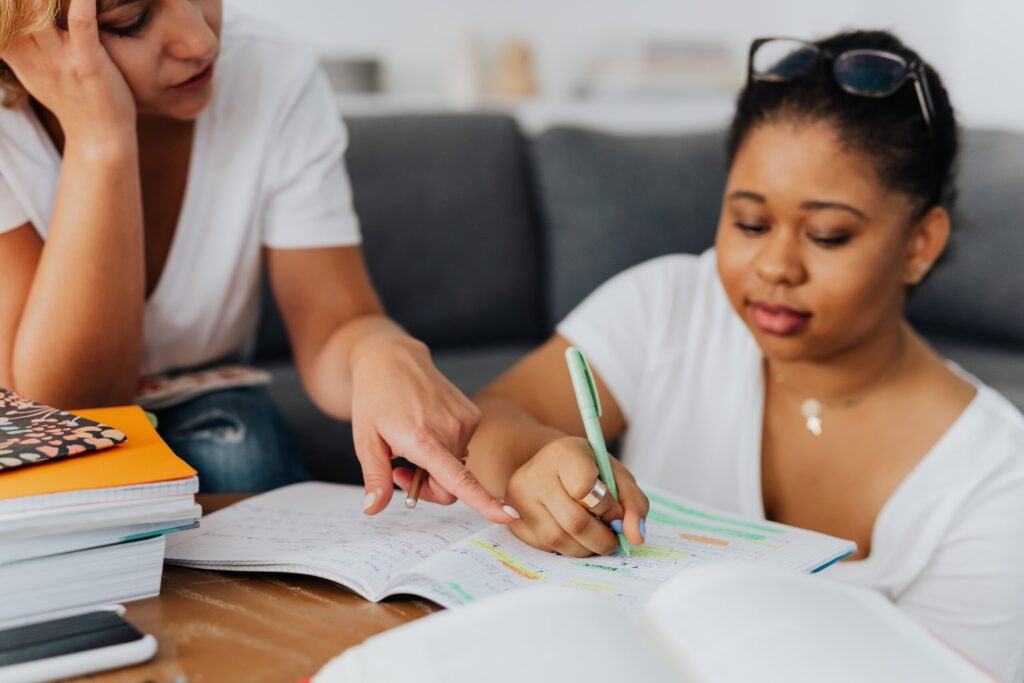Challenging Insecure Attachment Tendencies & Moving Toward Connection
- Category: Relationships
- February 17, 2023
By Rachel Rutkie, a Washington state-based psychologist.
In their book Attached: are you anxious, avoidant, or secure? How the science of adult attachment can help you find—and keep–love, Dr. Amir Levine and Rachel S.F. Heller, M.A. present the dependency paradox. They write, “The ability to step into the world on our own often stems from the knowledge that there is someone beside us whom we can count on—this is the dependency paradox” (p.29). This statement struck me. In a society that praises independence and condemns dependency, could it be that depending on each other more deeply is exactly what we are yearning for? Would relying on others more wholeheartedly gain us access to the courage we need to live a more meaningful life?
Before we explore further, what is attachment theory? There are various definitions, but overall, it can be defined as a set of principles that outline the human biological need to establish emotional intimacy and trust with others. In childhood, the best-case scenario is developing a secure bond with a caregiver, which can be helpful in a child’s emotional and social development. In adulthood, secure bonds can decrease the impact of stress (Levine & Heller, 2019), create feelings of security and healthy interdependence, and cultivate the courage to take risks.
Usually, attachment styles are first broken down into two main categories: secure and insecure. People with secure attachments are often the healthiest and most functional in relationships. They are still prone to making mistakes and mistreating others (they are human, after all!), yet they are generally trusting that others will be there to support them, are able to set boundaries and name their needs, and are willing to be vulnerable and connect with others on a deeper level.
Insecure attachment is usually broken down into three subcategories: anxious, avoidant, and anxious-avoidant (previously known as disorganized). Vulnerability is a struggle for all of us who are insecurely attached. When there is high anxiety, we often believe that bringing our whole selves into the relationship will lead to abandonment. Anxiously attached folks are more prone to taking the blame for relationship discrepancies too readily. When avoidant attached, vulnerability is avoided because no one is thought to be reliable, and we believe that we only need ourselves—self-reliance is protected by creating distance from others. Though avoidantly attached folks often believe they are better off on their own, subconsciously the need to depend on others persists. The anxious-avoidant attachment style is often thought to result from a more chaotic upbringing, where experiencing trauma is more likely. Anxious-avoidant folks may experience more disconnection from themselves and from others. In addition, vulnerability can be further complicated by the push-pull tendencies that often ensue (i.e. romanticizing one’s partner followed by devaluing one’s partner). [See note at the bottom of the page regarding anxious-avoidant attachment.]
In the past, it was believed that throughout childhood we all develop an attachment style in response to our caregivers and that we retain the same attachment style throughout our adult life. Now, research demonstrates that our attachment style can change in response to our experiences in relationships and as a result to doing emotional work (Levine & Heller, 2019). As humans, we all have an internal attachment system. Levine and Heller (2019) describe that the “attachment system is the mechanism in our brain responsible for tracking and monitoring the safety and availability of our attachment figures” (p. 79). Attachment figures could be a parent, caregiver, romantic partner, close friend, etc. Interestingly, I have noticed that some of us may achieve a seemingly secure relationship in some contexts while emulating an insecure attachment in other relationships.
Two dimensions are considered when exploring which attachment style may be prominent in an individual: avoidance of intimacy and anxiety in the relationship. Though there are nuances and details to consider, a starting point can be to evaluate where you fall on these two dimensions. If you experience high anxiety in the relationship and low avoidance of intimacy, your attachment style may be anxious. If you experience low anxiety in the relationship and high avoidance of intimacy, then your attachment style may be avoidant. If you are high in both anxiety and avoidance, anxious-avoidant is likely your attachment style. And, last, if you are generally low in both dimensions, you likely have a secure attachment.
Anxious Attachment Style:
Levine and Heller (2019) explain how anxiously attached people need to keep their eye on two processes: activating strategies and protesting behaviors. Activating strategies are thoughts that aim to reestablish closeness with one’s partner (Levine & Heller, 2019). One example of an activating strategy is feeling preoccupied with the relationship unless in direct contact with your partner. Activating strategies seem to be derived from core beliefs that you are inherently inadequate and/or that you will inevitably end up alone, especially if you express needs and boundaries.
Protest behaviors are “any action that tries to reestablish contact with your partner and get their attention” (p. 88). In principle, these strategies may have been evolutionarily advantageous, but in the modern day, they often embody passive and/or aggressive communication. Examples include withdrawing during a conversation, excessively texting your partner, and pretending you are busy to send the other ‘a message.’
Building awareness around activating strategies and protest behaviors can be helpful in better understanding when you are triggered in a relationship, whether the relationship is a good fit for your needs, and how to break problematic cycles that lead to disconnection and dissatisfaction. Balance is important here. The idea is not to negate your partner’s needs and focus only on your own. Rather, owning one’s needs at the forefront and challenging black-and-white thinking, while also tending to your partner’s needs, is key when addressing anxious attachment behaviors.
Avoidant Attachment Style:
Avoidant attached people may be at a disservice when it comes to unwinding their problematic behaviors and beliefs. Often, their problematic behaviors are more subtle and are enabled by American cultural values. People with an avoidant attachment often work hard to protect their sense of independence and deny their needs for closeness in relationships. Levine and Heller (2019) assert that people with this attachment style need to keep their eye on deactivating strategies, which can be defined as “any behavior or thought that is used to squelch intimacy,” which in turn “suppress our attachment system” (p. 116). Deactivating strategies include sending a partner mixed messages, persistently criticizing your partner, and withholding sex to avoid intimacy. Someone with avoidant attachment often blames others or circumstances for their loneliness instead of slowing down and looking inward.
Building self-awareness around deactivating strategies is crucial for avoidant partners who want to change. It can be easy to blame an anxiously attached partner for being too ‘clingy’ (which reinforces insecure attachment issues on both sides) and to reject others due to their imperfections. What is much more difficult, and often more worthwhile, is to notice ways you are pushing your partner away and to practice conceptualizing romantic partnerships as including interdependence and intimacy. Independence, in this context, does not create the safety and satisfaction that American culture promises. It often further disconnects us from our humanness and leaves us depressed, ashamed, anxious, and/or lonely.
Alternatively, if you have an avoidant attachment and do not wish to work toward a more secure style, there is the opportunity to elicit informed consent from your partner. Develop awareness of your boundaries within a romantic relationship (e.g. no cohabitation, little desire to vacation together, unwillingness to text daily) and communicate these preferences directly. This will decrease the expression of mixed messages and create a more direct route to finding a partner who may also prefer more distance in the relationship.
Alongside building self-awareness, it can be helpful to have specific skills to practice to promote experimentation with coping strategies. Below are some examples.
Anxious Attachment Skill Recommendations:
Dialectical Behavior Therapy’s (DBT) Wise Mind Skill-Slow down when you notice your activating strategies playing out. Notice the emotional thinking that is escalating you further. Take deep breaths. Ask yourself: “what do I think about this? What do I know might be going on in this situation?” Use your intellect to remind yourself that abandonment is not inevitable and/or that you are a capable person who is not doomed to end up alone if the current relationship does not work out.
Mindfulness-Any mindfulness practices may be helpful. Mindfulness-Based Relapse Prevention’s SOBER Space is a quick practice that can disrupt unhelpful cycles. SOBER is an acronym for the steps of the practice: Stop, Observe emotions/thoughts/body sensations, Breathe, Expand Awareness of your environment/situation, and Respond to the situation (instead of reacting). Any version of pausing and observing the self non-judgmentally will likely be helpful.
Journal/Reflect- Consider questions of: In what ways might I conceptualize myself as inadequate or unlovable? Where did I learn this? How can I challenge my distorted self-perception? What are my needs in relationships? How can I practice advocating for myself and challenge any notion that I am a burden just by desiring affection and connection? What can I do instead of my protest behaviors when feeling dissatisfied in my relationships?
Avoidant Attachment Skill Recommendations-
DBT’s Do the Opposite-When you notice urges to criticize your partner or blame others for your emotions, do the opposite. If you would normally shut down and avoid others, consider reaching out to a friend and experimenting with connecting. If you would normally compare your current partner to your ex or “a more perfect partner,” pause and recall what you like about your partner. (And if there is not much you like about your partner, deeply consider ending the relationship—neither person can find fulfillment in that dynamic).
Mindfulness-Try out a Body Scan practice and get familiar with bodily sensations and then use this information to get more in touch with your emotions. Emotions tend to manifest themselves in various ways, including bodily sensations. Over time, it will become easier to identify emotions if you have some access to bodily awareness.And, access to our emotions can help us to gain insight on our core needs. To become more secure, acknowledging your own human needs will be helpful.
Journal/Reflect: If you experience low anxiety and high intimacy avoidance, in which ways are you avoiding the human need to rely on others for support and care? What is unsettling about relying on others and where did you learn this? What are your instinctive deactivating strategies? What pulls you to desire or participate in romantic relationships? Is there evidence to suggest that reliable people exist in the world? In what ways does your behavior push people away and become a self-fulfilling prophecy that others cannot be dependable? Some final notes:
-
I highly recommend reading the book Attached! (cited in this article.) There are quizzes, additional insights, and research findings that could be helpful.
-
If you identify as having an anxious-avoidant attachment style build self-awareness (through journaling, therapy, reading, etc.) to better understand in which ways you react to your anxiety in relationships (i.e. activating strategies/protest behaviors) and in which ways you attempt to avoid intimacy (i.e. deactivating strategies). If you have a trauma background, consider working with a licensed therapist on healing from the past. It may be complex to work through attachment-related issues, yet more fulfilling relationships are attainable! You got this.
-
If you subscribe to non-monogamy, consider ways the above content can be applied to your relationship dynamics. Themes such as providing reassurance, building self-awareness, and communicating directly are relevant in all relationship contexts. Also, check out the book Polysecure by Jessica Fern for more specificity.
References:
Levine, A., & Heller, R. (2019). Attached: are you anxious, avoidant or secure? How the science of adult attachment can help you find—and keep–love. Bluebird books for life.



